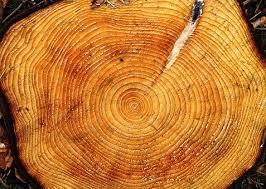
Annual growth rings are formed due to the activity of
A. Extra-stelar cambium
B. Intra-stelar cambium
C. Inter-stelar cambium
D. All of the above
Answer
584.4k+ views
Hint: Growth ring is a characteristic of woody trees. They can be seen in a cross-section of the stem in woody plants. It varies according to seasonal changes and can be differentiated morphologically.
The cambial activity gives rise to the formation of annual growth rings.
Complete answer: Intrafascicular cambium is a meristematic tissue, located between the xylem and the phloem in dicotyledonous plants.
The pith rays, situated at the edges of the intrafascicular cambium, undergo repeated division to form a new strip of cambium between the two vascular bundles namely, the interfascicular cambium.
This entire structure including both the inter and intrafascicular cambium is collectively termed as the vascular cambium.
The activity of vascular cambium produces annual growth rings in woody plants. The vascular cambial ring divides forming the secondary xylem towards the inner side and secondary phloem towards the outer side.
Since the vascular cambium is present within the stele, therefore it is also termed as intra-Stelar cambium.

Additional information: The vascular cambium and cork cambium are secondary meristems that are formed in roots and stems after the tissues of the primary plant body have differentiated.
The vascular cambium is responsible for increasing the diameter of stems and roots and for producing woody tissue. The cork cambium produces some part of the bark.
So, the correct answer is option B. Intra-Stelar cambium.
Note: Depending on the season, the cambial activity rate changes and there is an alternative production of narrow and wide rings in the stem. The darker wood is generally formed during summers whereas the lighter shade ring forms in the winter season.
The cambial activity gives rise to the formation of annual growth rings.
Complete answer: Intrafascicular cambium is a meristematic tissue, located between the xylem and the phloem in dicotyledonous plants.
The pith rays, situated at the edges of the intrafascicular cambium, undergo repeated division to form a new strip of cambium between the two vascular bundles namely, the interfascicular cambium.
This entire structure including both the inter and intrafascicular cambium is collectively termed as the vascular cambium.
The activity of vascular cambium produces annual growth rings in woody plants. The vascular cambial ring divides forming the secondary xylem towards the inner side and secondary phloem towards the outer side.
Since the vascular cambium is present within the stele, therefore it is also termed as intra-Stelar cambium.

Additional information: The vascular cambium and cork cambium are secondary meristems that are formed in roots and stems after the tissues of the primary plant body have differentiated.
The vascular cambium is responsible for increasing the diameter of stems and roots and for producing woody tissue. The cork cambium produces some part of the bark.
So, the correct answer is option B. Intra-Stelar cambium.
Note: Depending on the season, the cambial activity rate changes and there is an alternative production of narrow and wide rings in the stem. The darker wood is generally formed during summers whereas the lighter shade ring forms in the winter season.
Recently Updated Pages
The number of solutions in x in 02pi for which sqrt class 12 maths CBSE

Write any two methods of preparation of phenol Give class 12 chemistry CBSE

Differentiate between action potential and resting class 12 biology CBSE

Two plane mirrors arranged at right angles to each class 12 physics CBSE

Which of the following molecules is are chiral A I class 12 chemistry CBSE

Name different types of neurons and give one function class 12 biology CBSE

Trending doubts
One Metric ton is equal to kg A 10000 B 1000 C 100 class 11 physics CBSE

What is 1s 2s 2p 3s 3p class 11 chemistry CBSE

Discuss the various forms of bacteria class 11 biology CBSE

State the laws of reflection of light

Explain zero factorial class 11 maths CBSE

An example of chemosynthetic bacteria is A E coli B class 11 biology CBSE




